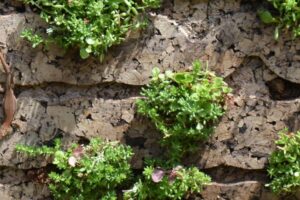
BWater: Sustainability and health impact assessment of water for human consumption in Barcelona
September 25, 2024
UPC technology to reduce the fuel consumption of the Open Arms humanitarian ship
October 1, 202430/09/2024
A team from the Centre for Research in Biomedical Engineering (CREB) of the UPC and Sant Joan de Déu has created a new web application that allows faster, more accurate and less costly analysis and automated interpretation of the type of medulloblastoma. The tool is key to the individualised treatment of this type of malignant brain tumour that mainly affects children and young people.
Medulloblastoma is a malignant brain tumour that mainly affects children and young adults, accounting for approximately 20% of all brain tumours in this population. Accurate classification of the molecular groups of medulloblastoma is crucial for oncologists to define the most appropriate treatment plan for each patient.
Molecular classification of medulloblastoma is increasingly important for clinical decision-making that defines patient management and treatment. Current classification systems for the molecular subgroups of medulloblastoma are expensive and take several weeks to obtain results. This makes them inaccessible for many centres around the world treating patients with brain tumours.
In this context, the team formed by researchers from CREB's B2SLab of the UPC, the Institut de Recerca Sant Joan de Déu (IRSJD) and l'Hospital Sant Joan de Déu, has developed a new methodology to classify the main molecular groups of medulloblastomas quickly, accurately and easily, using technology within the reach of most centres that treat children with brain tumours.
Initially, in 2018, a team from the Laboratory of Molecular Oncology of the Hospital Sant Joan de Déu and coordinator of the Translational Genomics group of the IRSJD, analysed genomic data from more than 1,500 medulloblastoma samples obtained thanks to the collaboration of international research groups for two years. This study identified the minimum number of markers that allowed the classification of medulloblastoma into clinically relevant molecular groups with a reliability of 96%. From these data, CREB researchers were able to develop a system that allowed the classification of medulloblastoma into the three subgroups of clinical interest (WNT, SHH and non-WNT/non-SHH) in an accurate, rapid and accessible manner.
With these results and to facilitate their application, the IRSJD and CREB's B2SLab group have created an interactive web application, EpiGe-App, which allows automated analysis and interpretation of the type of medulloblastoma. The advances achieved in this project have been rapidly transferred to care to support clinical decisions, to individualise patient therapy according to the genetic characteristics of the tumour and to offer more effective targeted therapies with less toxicity.
The EpiGe application allows the classification of medulloblastoma samples into the three molecular groups based on DNA methylation data obtained through the molecular technique of quantitative PCR (qPCR). Given the availability and accessibility of qPCR in most molecular biology laboratories, the tool developed makes the classification of these tumours an accessible test for most centres treating patients with central nervous system tumours.
To train the learning algorithm, genomic data from 4,800 samples, including 3,044 primary medulloblastomas and 1,644 non-medulloblastoma samples, were used. With these samples, a methylation status predictor algorithm was generated from raw qPCR data and from this prediction, an automatic classifier was generated into molecular subgroups of medulloblastoma. Through this learning, EpiGe-App is able to accurately classify WNT, SHH and non-WNT/non-SHH molecular subgroups of medulloblastoma, which can help medical teams define the most appropriate treatment.
EpiGe-App allows healthcare professionals around the world to upload the results obtained following the detailed protocol available on the website. In less than two minutes, the platform returns a report with the result, offering 96% reliability in identifying the medulloblastoma subgroup.
EpiGe-App has been funded with the support of the patient family associations of the Hospital Sant Joan de Déu, the TV3 Marathon and the Ministry of Science, Innovation and Universities with a budget of €298,625. The project has lasted three years.
Funding
Related Projects
- The BIOsignal Analysis for Rehabilitation and Therapy (BIOART) research group at the Universitat Politècnica de Catalunya – BarcelonaTech (UPC) coordinates the Proactive Response and Efficient Planning with AI for Resilient Emergencies in hospitals (PREPARE) project, which aims to optimise hospital preparedness during emergencies through dynamic capacity and risk assessment using artificial intelligence (AI).
- A research team from the inLab FIB at the Universitat Politècnica de Catalunya - BarcelonaTech (UPC), together with the Asociación de Personas con Movilidad Reducida (AsoPMR), has taken part in the Spot4Dis project to enhance the mobility and autonomy of people with reduced mobility.
- The La Volta project foresees the construction of a large Catalan vault pergola within the Llars Mundet campus, in the Montbau neighbourhood (Horta-Guinardó district). This structure will become a new architectural landmark for Barcelona, combining traditional construction techniques with contemporary innovation. The project involves the Rehabilitation and Architectural Restoration Research Group (REARQ), at the Universitat Politècnica de Catalunya - BarcelonaTech (UPC), and is led by the Architects’ Association of Catalonia (COAC) and the Barcelona Provincial Council.
SATE-VEG: A system for energy renovation of buildings that helps reduce the urban heat island effect
Researchers from the Architecture, Energy and Environment (AiEM) group at the Universitat Politècnica de Catalunya - BarcelonaTech (UPC) have developed SATE-VEG, an external thermal insulation system with a vegetal coating that offers seasonally adaptive thermal behaviour, enhances urban biodiversity and promotes positive health effects. The system is made from organic materials, requires low maintenance and consumes minimal water.












